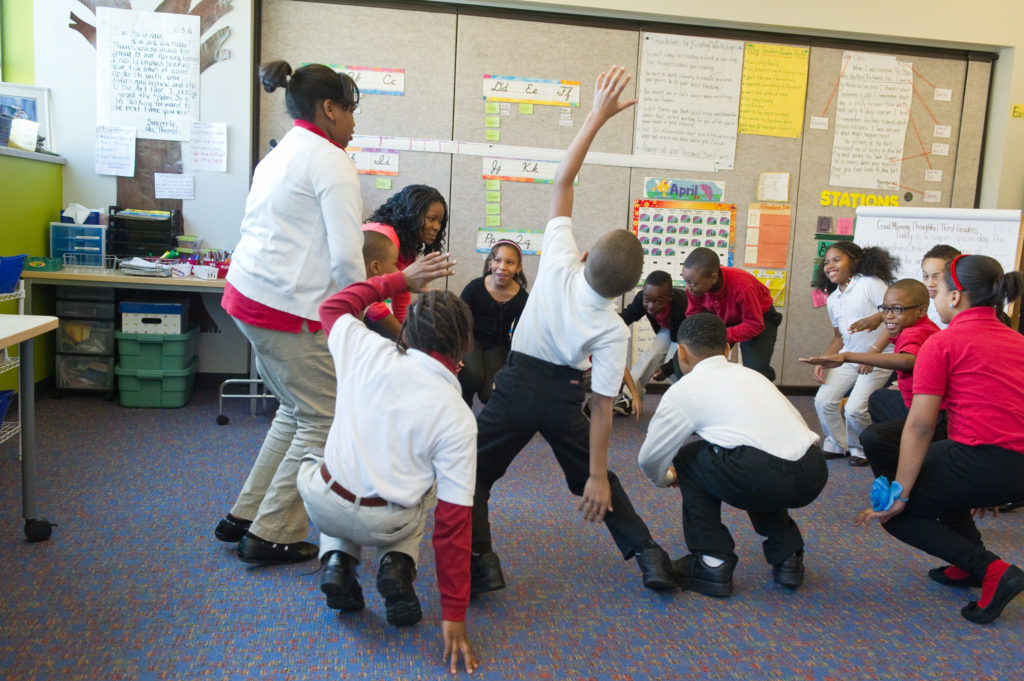

I caught the eye of my paraprofessional and signaled her to take Justin into the hall for a quick movement break. Justin responded to the “break” signal we had previously taught him and quietly headed out into the hall. Minutes later, he returned to the circle, focused and ready to participate in reading the morning message with the rest of the class.
Well-planned and regularly used, movement breaks can help all students refocus and regain their energy. For example, a quick chant of “Tony Chestnut” can be an easy way to get everyone on the same page before a Writer’s Workshop mini-lesson. But in my experience, some students with special needs may benefit from extra movement breaks. When we don’t offer such breaks, off-task or disruptive behavior may ensue.
Justin is an example of the student who profits from extra breaks. To satisfy his sensory needs when he’d been sitting quietly for too long, he would flap his hands; make physical contact with a classmate, or both. This behavior prevented him from focusing and ultimately disrupted the class’s activity. Extra movement breaks met his needs.
At first, I would direct Justin to take a break. As we progressed through the year, he began, with adult help, to recognize when he was losing self-control and would ask for breaks when he needed them. After his breaks, he would be calm, in control, and ready to work.
[Read “Individual Written Agreements: When a Child Needs Extra Support,” for more about how the author worked with this student.]
Some of the movement breaks that worked for Justin were simple: wall push-ups and jumping jacks in the hallway. Some required the supervision of a paraprofessional. These breaks included jumping on the trampoline in the occupational therapist’s classroom or sprint-running in our multipurpose room.
Here are some more breaks we used with Justin. If you want to try some of these with your students, start simple and try just one or two at first. As you progress to more complicated movement breaks, you’ll want to use Interactive Modeling to teach them.
Movement breaks are important for all children, but giving additional movement breaks to some may be just the thing to help them through a challenging part of their day. What extra movement breaks have you tried with special needs students? I’d love to hear what’s worked!
Get tips for teaching and using energizers in Susan Roser’s book, Energizers! 88 Quick Movement Activities That Refresh and Refocus.
Candace Roberts is a Responsive Classroom consultant, kindergarten teacher in Rhode Island, and Early Childhood Generalist.